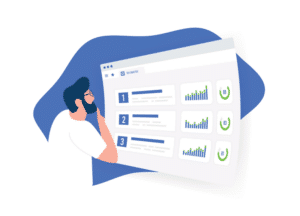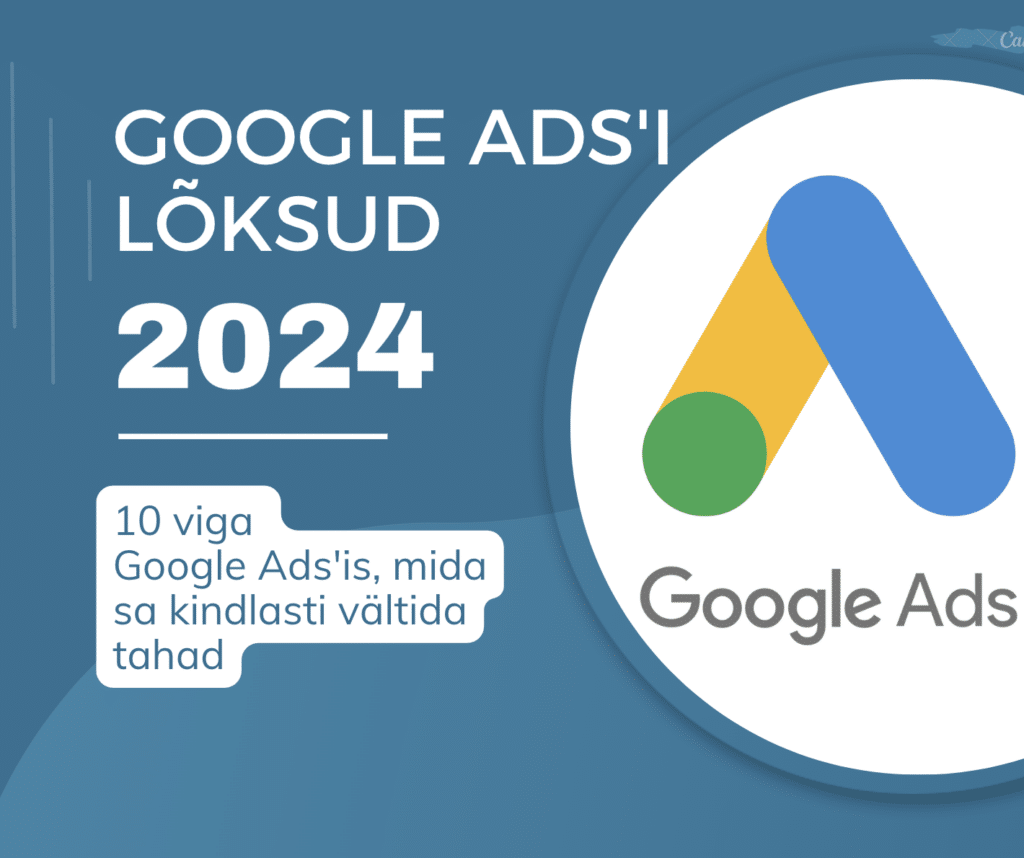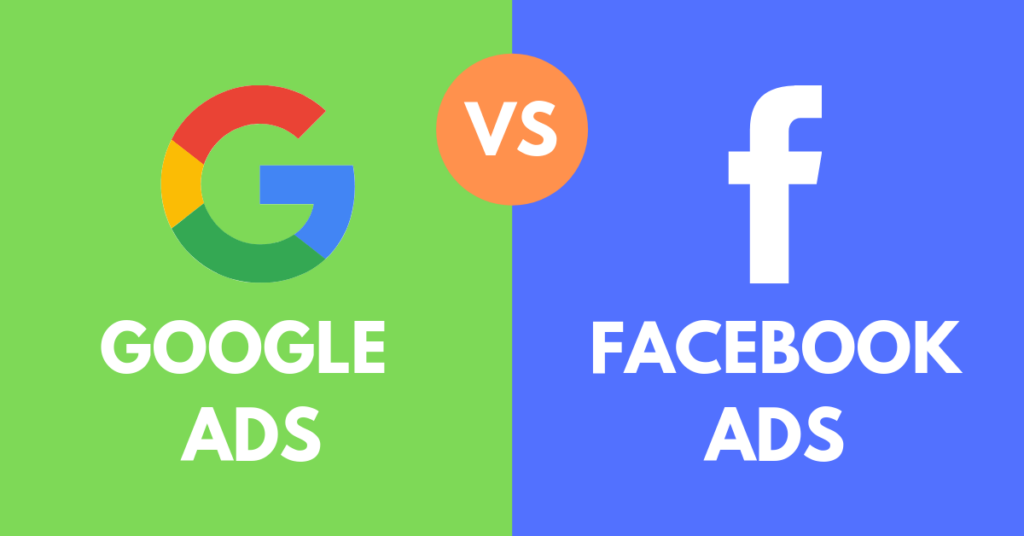The world of digital marketing is full of challenges where achieving success goes far beyond simply spending money on advertising. Based on my extensive experience on the Google Ads platform, I have identified effective strategies and approaches that have helped businesses achieve outstanding brand visibility, generate qualified leads and increase online sales. Here are several key observations that are key to turning every click into a valuable step towards growing your business.
How to turn clicks into sales?
Google Ads Secrets #1
1. Team: successful digital campaigns often have a team behind them with a deep understanding of both marketing and technology. When creating a campaign, it is important that the team has the skills and knowledge to design and implement strategies that not only generate clicks, but also convert them into sales.
2. Processes: every campaign requires careful planning and continuous optimisation. From defining the target audience to analysing the conversion journey, it is important to assess at each step how the processes support the sales objectives. Testing and data analysis play an important role, helping to identify what works and what doesn’t, and allowing necessary adjustments to be made in real time.
3. Product: The product or service’s ability to meet market demands is critical to achieving sales. If clicks are being generated but no sales are being made, the problem may lie in the attractiveness or positioning of the product. It is therefore important to regularly assess the product’s characteristics, price and market demand to make sure it meets the expectations and needs of the target audience.
4. Targeting and messaging: effective targeting combined with a compelling message is key to converting prospects into buyers. It is important to create ads that speak to the specific needs and desires of your target audience, offering a clear value proposition that differentiates your product or service from competitors.
5. Conversion tracking: it is essential to set up accurate conversion tracking and use analytics to measure return on investment. This allows you not only to track how many sales are coming from a campaign, but also to understand customer behaviour and optimise campaigns for even better results.

Choosing the right keywords
Google Ads Secrets #2
Choosing the right keywords is one of the most important steps in Google Ads campaigns. This process requires precise targeting and an understanding that not all keywords may create value for your business. Statistically, only a small percentage of keywords are those that actually bring conversions and therefore paying customers. This means that a large proportion of the keywords that may be targeted may never generate the expected results.
Targeting the wrong keywords can be costly. If you invest in keywords that don’t lead to conversions, you’re spending your budget unnecessarily, with no benefit to your business. So it’s important to do a thorough keyword research before launching a campaign to identify those valuable keywords that are most likely to drive conversions.
Several factors should be taken into account when choosing keywords:
- Target audience: understand the search behaviour of your target audience. What terms do they use to describe their needs or problems?
- Product or service related: select keywords that are directly related to the products or services you offer. This will ensure that your ads appear in relevant search queries.
- Competition and price: Some keywords can be very competitive, which means higher click-through rates. Consider whether targeting specific keywords is cost-effective, especially if you have a limited budget.
- Long tail keywords: Long-tail keywords, which are more specific and often less competitive, can be an effective way to target qualified traffic. These are usually longer phrases that reflect a specific search intent.

Analytics and conversion tracking
Google Ads Secrets #3
Analytics and conversion tracking are key to the success of digital advertising. Before you invest money in digital advertising, it’s important to make sure you have systems and tools in place to measure and analyse the performance of your campaigns. This information is essential to understand which aspects of your campaigns are working and which are not, and allows you to make appropriate adjustments to maximise efficiency and return on investment.
Why is it important to track analytics and conversions?
-
Measures the effectiveness of your campaigns: analytics give you a detailed insight into how your campaigns are performing, including the number of clicks, conversion rate, cost per conversion and more. This data is essential to understand the cost-effectiveness of your advertising campaigns.
-
Allows you to adapt your strategy: Conversion tracking provides information on which ads, keywords or audiences are driving the most conversions. With this information, you can tailor your campaigns to increase their effectiveness by targeting resources to the most effective elements.
-
Helps you optimise your budget: analytics can help you understand how to allocate your budget most efficiently. You can identify which campaigns or keywords are the most profitable, and allocate more resources to those areas that deliver the best return on investment.
-
Improves customer experience: conversion tracking data allows you to identify which aspects of your landing pages or purchase process need improvement. This allows you to optimise the user experience and increase conversion rates.
How to set up conversion tracking?
In order to set up conversion tracking in Google Ads, you first need to define which activities on your website count as conversions. These may include submitting forms, purchasing products, subscribing to a newsletter or any other purpose that is important to your business. You can then set up conversion activities in Google Ads and integrate tracking code into your website to monitor when users perform these activities after clicking on your ads.

Immediate feedback
Google Ads Secrets #4
The Google Ads system is characterised by its ability to provide almost instant feedback, acting like a switch that can instantly direct traffic to your website. This speed and immediacy is one of the biggest advantages of digital advertising, allowing advertisers to see in near real-time how their campaigns are performing. If you don’t notice lead generation or sales growth almost immediately after activating a campaign, it’s a sign that there may be a problem with your campaign setup or targeting.
How does immediate feedback help?
-
Identify problems quickly: if traffic isn’t converting the way you want, Google Ads gives you the power to quickly identify and fix problems. This could include refining targeting, modifying advertising messages or optimising landing pages.
-
The importance of setup and targeting: campaign setup and targeting errors are common reasons why ads do not deliver the desired results. Perhaps your target audience definition is not precise enough or your advertising message does not resonate with your target audience. Immediate feedback helps you to quickly assess and correct these aspects.
What to do if the immediate feedback is negative?
-
Review targeting parameters: make sure your targeting choices, geographical restrictions and timing are in line with your business objectives. It may be necessary to narrow or broaden targeting.
-
Optimise advertising messages and visuals: Check that your advertising messages are clear and persuasive. Use A/B testing to find the most effective messages and designs.
-
Improve landing pages: The landing page should be optimised for conversions, providing a clear call to action and delivering on the promises made in the ad. Page loading speed and user experience are also critical.
-
Analyse and adapt offers: Make sure your bidding strategies are optimised to achieve the best possible visibility and click-through rates within your budget.

Block irrelevant search terms
Google Ads Secrets #5
Blocking irrelevant search terms is crucial to the success of a digital advertising campaign. This process includes filtering out irrelevant or irrelevant search terms that do not bring valuable traffic to your website and constantly updating the list of negative keywords. Negative keywords are terms that you do not want your ads to appear for because they are not related to the products or services you offer or do not bring the type of traffic you want.
Why is it important to block irrelevant search terms?
-
Saving money: blocking irrelevant terms will help you avoid spending money on adverts that appear as a result of inappropriate search queries. This means that your advertising budget is used more efficiently, targeting only relevant and effective searches.
-
More precise targeting: by blocking unrelated terms, you can make sure your ads reach the right audience. This improves the overall effectiveness of the campaign by increasing the number of relevant visitors, which in turn increases the likelihood of conversions.
-
Improve campaign performance: blocking irrelevant search terms will help increase your ad click-through rate (CTR) and improve your campaign quality score. A higher quality score can lead to lower click-through rates and a better advertising position.
How to block irrelevant search terms?
-
Analyse search term reports – Google Ads provides search term reports that show what terms people are searching for in your ads. Examine these reports regularly to identify irrelevant or unrelated terms.
-
Add negative keywords: Once you’ve identified terms you want to exclude, add them to the list of negative keywords in your campaign or ad groups. This will prevent your ads from appearing in the search results for these terms.
-
Ongoing optimisation: blocking irrelevant terms and managing negative keywords is an ongoing process. The market and search behaviour are changing, so it is important to regularly update and adapt your negative keyword lists.

A/B testing
Google Ads Secrets #6
Testing, also known as split testing, is the process of comparing two versions – A and B – to see which is more effective. This method is widely used in digital marketing, including Google Ads campaigns, landing pages and other marketing materials.
Despite its importance, many companies do not fully exploit the potential of A/B testing. Continuous testing allows you to identify and implement the most effective solutions, leading to higher conversion rates and better return on investment.
Why is testing important?
-
Making decisions based on data: testing allows you to make decisions based on real data, not just assumptions or intuition. This reduces risks and helps optimise marketing activities more effectively.
-
Improving conversion rates: by testing different elements such as ad copy, keywords, landing pages and even the 7 P’s of marketing, you can identify exactly what appeals most to your target audience and drives conversions.
-
Optimising the customer experience: with A/B testing, you can try different approaches to improve the customer experience, such as changing the landing page design or simplifying the purchase process, which can increase customer satisfaction and loyalty.
What to test for in A/B testing?
-
Keywords: Compare different combinations of keywords to see which ones bring the most and highest quality clicks.
-
Ad copy: test different ad copy to see which messages generate more interest and conversions.
-
Landing pages: compare the different versions of landing pages, including design, content and calls to action (CTAs) to see which converts better.
-
The 7 P’s of marketing: test the different elements of the marketing mix, including product, price, place, promotion, people, process and physical evidence, to identify what most influences your target audience’s purchasing decisions.
How to conduct A/B testing?
-
Set a target: start by setting a clear target that you want to achieve with the test.
-
Create two versions: Create two versions (A and B) of the item under test, changing only one variable so that you can accurately measure its effect.
-
Share the traffic: divide your target audience equally and randomly between the two versions to ensure reliable results.
-
Analyse the results: collect data and analyse the results to see which version achieved the test objective better.

A/B testing
Google Ads Secrets #7
The 7 P’s of marketing is a classic marketing theory developed to market a product or service effectively in the marketplace. The seven P’s are: product, price, place, promotion, people, process and physical evidence.
While these concepts may seem outdated in the age of digital marketing, understanding and applying them is still crucial to the success of any marketing campaign.
- Product: This is what you sell – whether it’s a physical good, a service or even a digital product. Product development, quality, design and features are critical to meet the needs and desires of the target market.
- Price: This is the amount customers are willing to pay for a product or service. Pricing strategy, discounts, payment options and credit conditions have a direct impact on sales and profitability.
- Place: this indicates how the product reaches the consumer. The site includes distribution channels, points of sale and logistics. In digital marketing in particular, this means optimising websites and making goods available across different platforms.
- Advertising (promotion): This refers to any measure used to market a product or service and raise awareness. This includes advertising, personal selling, public relations, social media marketing and more.
- People: Anyone involved in the supply and consumption of a product or service, including company staff and customers. Quality of customer service, staff training and customer experience management are essential for successful marketing.
- Process: This refers to the procedures, mechanisms and activities by which products or services are consumed. This includes customer service processes, payment processing, delivery of goods and returns policy.
- Physical evidence: Physical evidence refers to anything that allows customers to evaluate the service they have purchased. In digital services, these can be website design, user interface and user experience.
Understanding these seven elements and optimising their inter-relationship can have a significant impact on the performance of marketing campaigns.
It is important to understand that these elements work together to create a holistic marketing strategy that meets the needs and desires of the customers in the target market, thereby increasing sales and business profitability. Implementing the 7 P’s of marketing enables businesses to build stronger and more lasting relationships with their customers, differentiate themselves from competitors and succeed in the marketplace.

Click price vs. customer acquisition price:
Google Ads Secrets #8
Click-through-cost (CPC) and customer acquisition cost (CPA) are both important metrics for digital advertising, but their importance and role in marketing strategy can vary significantly. While click-through rate is important in managing advertising spend, it may not be the best indicator of overall campaign effectiveness.
It is much more important to focus on the cost of acquiring a customer and the return on investment (ROI), as these metrics provide a deeper insight into the true impact of a campaign on the company’s bottom line.
Click-through cost (CPC): this is the amount advertisers pay each time a user clicks on their ad. Click-through rate is important for budget management and can help optimise campaigns to get more clicks with a smaller budget. However, the CPC does not provide any information about what happens after the click – whether the visitor becomes a customer or not.
Customer Acquisition Price (CPA): this is the average amount spent to acquire each new customer. CPA is calculated by dividing the total campaign cost by the number of conversions. Unlike CPC, which focuses only on clicks, CPA more holistically reflects the effectiveness of a campaign by measuring how much it costs to achieve an actual sale or desired action.
Return on investment (ROI): this is one of the most important metrics that shows how profitable your advertising campaign is. ROI is calculated by dividing the revenue generated by the amount spent on the campaign. A high ROI means that your campaign generates significantly more revenue than was spent on advertising.
Conversion costs: While conversion cost can provide useful information, it is important to understand that not all conversions are created equal. Some conversions may bring more revenue than others. Therefore, it is also important to look at the quality of conversions and their impact on company profits.

Ignore Google recommendations
Google Ads Secrets #9
Google Ads often provides users with a range of recommendations and automatic optimisations designed to help advertisers improve the effectiveness of their campaigns. However, it’s important to understand that Google’s recommendations can sometimes be more focused on increasing clicks or your advertising budget, not necessarily on maximising your business revenue or profit.
It is therefore critical to approach Google’s recommendations in an informed and considered way, bearing in mind your business objectives and budgetary constraints.
Why should you consider ignoring Google’s recommendations?
-
Personalised strategies: every company has unique objectives, target groups and budgets. What works for one company may not work for another. It is therefore important to develop a personalised approach based on your own analysis and experience.
-
Budget control: following Google’s automatic recommendations can sometimes lead to higher costs without a corresponding increase in revenue. Careful management of your budget and channelling investment into the most efficient areas is essential to ensure cost-effectiveness.
-
Focus on ROI: Your main goal should be to maximise return on investment (ROI), not just to increase clicks or visibility. Invest in ads that bring real benefits, not just increase traffic.
How to make informed decisions when managing your Google Ads campaigns?
-
Setting goals: clearly define your business goals and how Google Ads can support them. Whether it’s driving sales, raising awareness or generating leads, your objectives should drive your advertising strategy.
-
Data analysis: use Google Ads and Analytics offers to track the performance of your campaigns. Analyse which ads, keywords and target audiences bring the most value and optimise your campaigns accordingly.
-
Testing and optimising: don’t be afraid to experiment with different approaches, including A/B testing, to find what works best for your business. Continuous testing and adaptation will help you achieve the most cost-effective solutions.
-
Independent judgement: while Google’s recommendations can be useful and offer new ideas, be selective in their application. Take into account the specifics of your business and budgetary constraints before implementing the recommended changes.
In summary, while Google’s recommendations can be helpful in improving the effectiveness of your campaign, it is important to remember that final decisions should be made based on the specific needs and objectives of your business. Finding cost-effective ways to increase sales through Google Ads requires constant analysis, testing and adjustment to ensure the best possible ROI.




